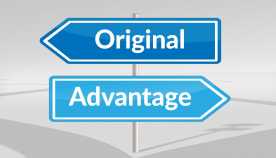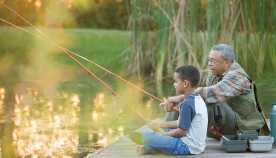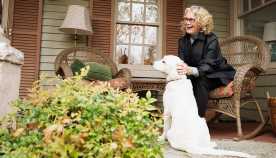AARP Eye Center
- right_container
- Health
- Money
- Work & Jobs
- Social Security
- Medicare
- Caregiving
- Games
- Travel
- More...
- Entertainment & Style
- Family & Relationships
- Personal Tech
- Home & Living
- Auto
- Staying Sharp
- Podcasts
- Videos
Audubon New York
Mission
Audubon's mission is to conserve and restore natural ecosystems, focusing on birds, other wildlife, and their habitats for the benefit of humanity and the earth's biological diversity.
Vision
Audubon New York’s vision is one of fully functional ecosystems and landscapes and healthy, well-managed habitats that support viable populations of birds and other wildlife. Audubon’s vision includes a well-informed and engaged citizenry that actively participates in alleviating threats to birds and their habitats and in finding solutions to environmental challenges in order to enhance the enjoyment of nature and improve the quality of life for all New Yorkers. Audubon New York will continue to be a conservation leader in New York State, promoting sound science and progressive policies, and using education effectively to unite and grow a constituency for nature.
Philosophy
Audubon New York is connecting people with nature and in turn making historic conservation actions possible. Our strong bi-partisan relationships with government leaders on local, state and national levels are augmented by our strong partnerships with other conservation and educational institutions.
Conservation
More than one quarter of America’s birds are in trouble or decline. They are vulnerable due to a combination of decreasing populations, restricted ranges, and significant threats. Research shows that bird conservation is primarily a matter of habitat conservation.
The cornerstone of all Audubon New York’s conservation efforts is science. Bird surveying, species assessment, grassland bird research, forest biodiversity research, and public outreach and education programs are the key elements driving our conservation priorities within New York State. Stationed at the Cornell Laboratory of Ornithology are Audubon New York’s Director of Bird Conservation, Important Bird Area (IBA) Coordinator, and Wildlife Ecologist. This locale provides them opportunities to work closely with leading ornithologists and conservationists in areas of research and analysis.
Audubon New York was a pioneer in launching the Audubon IBA program. In 2005 Audubon New York became the first state to release the second edition of “Important Bird Areas of New York – Habitats Worth Protecting”. This comprehensive guide identifies 136 IBAs, comprising more than 3.5 million acres of land and water habitat, which provide essential habitat for bird populations.
Audubon New York works in coalition with and coordinates New York State’s Smart Growth initiative to balance the impact of urban sprawl. Audubon New York continues to be an active leader on Long Island Sound, including advocacy for the State’s acquisition of the KeySpan-Jamesport 520-acre parcel on the North Fork. On private lands, Audubon is working to educate forest owners, foresters, loggers and builders about preferred stewardship practices favorable to birds and other wildlife.
Advocacy
Over the past several years, effective advocacy at federal, state and local levels has helped pass legislative measures from increasing the protection of the Great Lakes to banning the sale of lead sinkers, to restrictions of personal watercraft, to strategies to deal with invasive species and pesticides. Audubon advocacy has also been critical in securing hundreds of millions of dollars for state conservation programs including priority open space projects. Our federal advocacy increases funds for Long Island Sound, as well as protection of national treasures like the Artic Refuge.
Centers
Audubon Centers are facilities where people can become engaged in meaningful interactions with local environment. The staff at the Centers provide enjoyable learning experiences for school classes, teachers, families, children and adults. Whether it is an investigation into wetland wildlife, a class in backyard landscaping for birds and wildlife, or a week-long camping experience for a group of children, Audubon Centers provide the quality experiences that connect people with nature.
Our Centers Network includes eight Centers and staffed sanctuaries operated by Audubon New York, and two Centers operated by Audubon Chapters. Audubon New York’s Centers stretch from the Kaler’s Pond Audubon Center in Eastern Long Island to the Audubon Center at Knox Farm State Park near Buffalo.
Our most recent center is the Montezuma Audubon Center, located in the Montezuma Wetlands Complex north of Cayuga Lake in the town of Savannah. This Center will not only serve neighboring urban areas, such as Syracuse, but will also be an important site for bird conservation research.
Our two largest Centers include our oldest and newest operations. The Theodore Roosevelt Sanctuary and Audubon Center in Oyster Bay was Audubon’s first songbird sanctuary, and the Center serves approximately 100,000 visitors and program participants per year. Our newest and first urban Audubon Center is the Prospect Park Audubon Center, located in the heart of Brooklyn. Only in its second full year of operation, it is a partnership with the Prospect Park Alliance and already serves over 60,000 visitors per year.
Education
Education is an important component of Audubon’s effectiveness in creating lasting changes to protect the natural world. Audubon Centers provide educational experiences to people of all ages and backgrounds. Educational opportunities at Centers include Citizen Science projects for people to contribute their research, summer and school vacation programs for children, family activities, canoeing explorations along the Hudson River, and learning about wildlife in one’s own backyard or city park.
Our innovative For The Birds! program provides over 1,000 underserved school children in New York City Schools, and has now expanded to other parts of the state including Utica and Syracuse. Through the study of birds, they experience hands-on activities based on science and within their local environment. This multi-week program includes visits to the classroom by trained volunteers and staff, field trips to local parks, visits to the classrooms by artists, researchers, and live birds of prey. Plans are underway to expand it to other urban areas in New York State.
Audubon New York’s Centers and Education Network is continually improving and expanding the Audubon programs available across the state. Quality education, along with conservation and advocacy, is key to the ultimate success of Audubon’s mission.
AARP Events for Albany
-
Featured Event
The Irish Great Hunger & Mass Migration - 3/11
Tuesday, Mar 11, 2025 at 7:00 p.m. ET
Zoom
Online Event
-
Featured Event
Irish Step Dance for Beginners - Tue 3/25
Tuesday, Mar 25, 2025 at 7:00 p.m. ET
Zoom
Online Event
-
Featured Event
Irish Step Dance for Beginners - Tue 4/1
Tuesday, Apr 1, 2025 at 7:00 p.m. ET
Zoom
Online Event

with Automatic Renewal
- Immediate access to your member benefits
- Discounts on travel and everyday savings
- Subscription to AARP The Magazine
- FREE second membership

























































